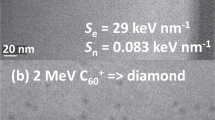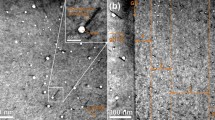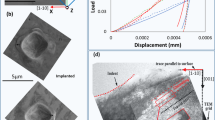Abstract
RECENT experiments1–5 have shown that the rate of 'solid-state' fusion of deuterons during either electrolysis or high-pressure deuteration of palladium or titanium must be at least many orders of magnitude lower than has been claimed6–8. It has been conjectured (refs 9–11; F. J. Mayer, J. S. King and J. R. Reitz, unpublished data; and R. Ryan et al., unpublished data) that fusion, which would occur at vanishingly low rates under static conditions, might occur at detectable rates under dynamic conditions. In particular, if a metal lattice, embrittled by deuteration, were to undergo microfracturing, deuterons might be accelerated in the transient high electric fields across the cracks, reaching energies sufficient to cause fusion. Emission of low-energy ions has been observed during mechanical fracture of TiD0.8 (H. O. Menlove et al., unpublished data), and Klyuev et al.12 claim, during fracture of LiD single crystals, to have detected an excess of neutrons above the cosmic-ray background. These results, and earlier claims to have observed electrification13,14 and emission of low-energy electrons15,16 and ions16during fracture of dielectric crystals, prompted me to see whether energetic protons are emitted during fracture of LiD crystals. I used a CR-39 track-recording plastic detector to detect any such emitted particles. However, no particles were observed, casting doubt both on the claim of Klyuev et al. to have seen fusion neutrons and on the conjecture that deuterated palladium or titanium could produce a detectable number of energetic particles as a result of fusion at cracks.
This is a preview of subscription content, access via your institution
Access options
Subscribe to this journal
Receive 51 print issues and online access
$199.00 per year
only $3.90 per issue
Buy this article
- Purchase on Springer Link
- Instant access to full article PDF
Prices may be subject to local taxes which are calculated during checkout
Similar content being viewed by others
References
Gai, M. et al. Nature 340, 29–34 (1989).
Lewis, N. S. et al. Nature 340, 525–530 (1989).
Ewing, R. I., Butler, M. A., Schirber, J. E. & Ginley, D. S. Fusion Technology (American Nuclear Society, Illinois, in the press).
Ziegler, J. F. et al. Phys. Rev. Lett. 62, 2929–2932 (1989).
Price, P. B., Barwick, S. W., Williams, W. T. & Porter, J. D. Phys. Rev. Lett. 63, 1926–1929 (1989).
Fleischmann, M., Pons, S. & Hawkins, M. J. electroanalyt. Chem. 261, 301–308 (1989); and erratum, 263, 187–188 (1989).
Jones, S. E. et al. Nature 338, 737–740 (1989).
De Ninno, A. et al. Nuovo Cim. A101, 841–844 (1989).
Garwin, R. L. Nature 338, 616–617 (1989).
Cohen, J. S. & Davies, J. D. Nature 338, 705–707 (1989).
Seitz, R. Nature 339, 185 (1989).
Klyuev, V. A. et al. Soviet Tech. Phys. Lett. 12, 551–552 (1986).
Kornfeld, M. I. J. Phys. D11, 1295–1301 (1978).
Golovin, Yu. I., D'yachek, T. P., Orlov, V. I. & Tyalin, Yu. I. Soviet Phys. Solid St. 27, 671–674 (1985).
Dickinson, J. T., Donaldson, E. E. & Park, M. K. J. Mater. Sci. 16, 2897–2908 (1981).
Wolbrandt, J., Linke, E. & Meyer, K. Phys. Status Solidi A27, K53–K55 (1975).
Mackay, K. M. Hydrogen Compounds of the Metallic Elements Ch. 3 (Spon, London, 1966).
Lipson, A. G. et al. JETP Lett. 49, 675–678 (1989).
Author information
Authors and Affiliations
Rights and permissions
About this article
Cite this article
Price, P. Search for high-energy ions from fracture of LiD crystals. Nature 343, 542–544 (1990). https://doi.org/10.1038/343542a0
Received:
Accepted:
Issue Date:
DOI: https://doi.org/10.1038/343542a0
This article is cited by
-
Critical review of theoretical models for anomalous effects in deuterated metals
International Journal of Theoretical Physics (1994)
-
Search for cold fusion induced by electrolysis in palladium
Il Nuovo Cimento A (1990)
Comments
By submitting a comment you agree to abide by our Terms and Community Guidelines. If you find something abusive or that does not comply with our terms or guidelines please flag it as inappropriate.



